Android Central Verdict
Bottom line: Nest Doorbell (wired) is among the very best video doorbells you can buy. It's the only video doorbell that can recognize faces and tell you who's there (and who shouldn't be there). Just make sure you're fine with paying a monthly subscription because it's basically useless without one.
Pros
- +
Sleek looks
- +
Intelligent notifications
- +
Familiar Faces is uniquely impressive
- +
The best Google Home integration
- +
24/7 recording (with the right subscription plan)
Cons
- -
No local storage
- -
No battery backup
- -
Subscription required for most features
Why you can trust Android Central
This review was written on March 27, 2018, and reflects the reviewer's thoughts at that time.
In retrospect, I should have seen this coming long ago. The idea of a video doorbell isn't all that novel. It's just a basic button, camera, speaker, and mic, with some flashing lights tossed in. That's not all that technologically advanced, right?
Nor does such a thing need to do all that much. It needs to show you who's at the door. It needs to allow you to talk to that person, and you talk to them. And it needs to record all this somewhere accessible, should something untoward happen.
No. Video doorbells, at their core, really are relatively simple products. So what could Nest Doorbell (wired) — the video doorbell entry from the Google-owned company known for its gorgeous thermostats, cameras, security system (and not-inexpensive prices) possibly do that the other best video doorbells don't?
A good bit, I've learned in a week or so of initial use of a Nest Doorbell (wired) purchased at retail. But also not without some room for improvement.
Nest Doorbell (wired): Price and availability
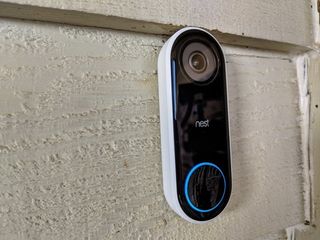
Since its original release, Nest Hello has been renamed Nest Doorbell (wired). This is to help differentiate it from the Nest Doorbell (battery), a redesigned battery-powered version of Google's best doorbell.
Nest Doorbell (wired) still retails for the original $229 price, despite its age, and is one of the only video doorbells that supports 24/7 continuous recording. You can find Nest Doorbell (wired) at Best Buy, home improvement stores like The Home Depot, and on the Google Store website.
In order to get access to most features, plus cloud storage, you'll need to subscribe to a Nest Aware plan. Nest Aware is a monthly subscription that enables cloud storage and many cloud-based computing features like Familiar Faces.
Nest Doorbell (wired): The basics
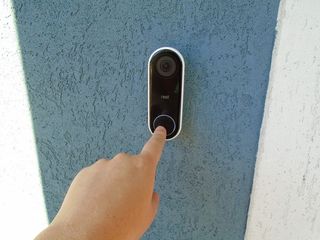
Here's the gist: Nest Doorbell (wired) is a $229 video doorbell that's powered by a low-voltage wiring system. There's a good chance that if you already have a doorbell, you've already got this. But ... it needs a low-voltage system with a transformer capable of handling 16V-24V.
As the name implies, it's got a camera built-in. Plus a mic and speaker. So using the Nest Android or iOS app (or Nest's web portal in a browser) you can see who's at the door either live or via a recording. You can talk to them, they can talk to you.
Your doorbell can still ring like it always has, but Nest has some excellent smart notifications rigged up. More on those in a bit.
Nest Doorbell (wired): Installation
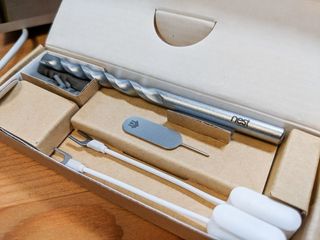
The first thing anyone asks me about one of these doorbells — and this is either the fifth or sixth I've installed in my own home — is about how easy it is to put in and set up.
Can you use a screwdriver? What about a drill? Can you follow basic instructions and maybe watch a video or two? Know how to turn off a breaker in a breaker box? That's all it takes. And for what it's worth, the process is almost identical to that of installing a Ring Pro, that company's high-end doorbell.
Before you do anything, though, I'd recommend spending a few minutes with the installation video, just so you don't rush things. (I dunno about you, but I tend to get a little ... excited ... when I've got a shiny new thing in hand. This is just insurance.) In fact, here's the video:
Nest walks you through the physical installation as you add the doorbell to the Nest app. Like with other Nest products, you do that by scanning a tiny barcode. I like that over putting the doorbell into a pairing mode and then praying Wifi Direct actually works because Wifi Direct often doesn't actually work on the first try. From there, the app goes through every single step you'll need, with that video to help guide you.
If you can change a light fixture, you can install Nest Doorbell (wired).
You'll also have to do a little work at the doorbell chime — and you do have to have a low-voltage system with a transformer capable of handling 16 volts, which is something I had to upgrade (again, just a very minor wiring job) back when I installed the Ring Pro. You'll rig up a little bypass in there (also just like with the Ring Pro), and then head outside.
That's all simple enough. And as it does with its other products, Nest includes pretty much everything you need to install right there in the box. (The Nest logo on the drill bit and SIM card tool — which you use to remove the doorbell from the wall — is a cute touch. Try not to lose it, though.)
My only real quibble with the installation process is that there's not a whole lot of wiggle room when it comes to positioning the doorbell itself because of how the low-voltage wires come through the mounting plate. That's a relatively minor thing, though — I had to drill a new hole and reroute the wires. Again, that's sort of basic home improvement stuff. And the wire extensions Nest included helped with that as well.
Finish the setup in the app, and you're done. If you know what you're doing, it should take maybe 20 minutes or so.
Nest Doorbell (wired): Using it

Nest Doorbell (wired) shows up in the Nest app like any of its other sibling cameras. In fact, you very much get the sense that it's a camera first, and a doorbell second. That's not necessarily a bad thing, especially if you're experienced with any of the other cameras in Nest's stable. It works exactly the same. (Up to and including the ability to have it shut off when Nest sees that you're home — but I'm not sure why you'd ever want to do that.)
It's worth spending a few minutes looking through all the options, particularly when it comes to notifications. Because that's where Nest Doorbell (wired) really starts to shine.

As a prerequisite, though — you're going to want to have a Nest Aware subscription. You get a free month to try it out. Beyond that, I've opted for the least expensive plan at $50 a year. (Subsequent devices get a discount, but it still adds up.) For that, you get continuous recording, with everything backed up to Nest's cloud for five days before rolling over. (You can pay more for 10 or 30 days of backup, but I've found that five is plenty for me.) Do you have to have a Nest Aware subscription? No. You get 3 hours of recorded video for free. But you'll miss out on the smart alerts. And they work thusly:
Like some other Nest cameras, Nest Doorbell (wired) is able to tie into the "Familiar Faces" thing. It works like this: Nest sees a face, then gives you the option to give it a name. The next time it sees that face, the notification will say something like "Hey, Phil's been seen in the camera." It's more personal, which is cool, but it also means I can parse notifications that much more quickly. Nest Hello sees my kid at the door? Cool. I don't need to actually open up the app and see who's there. It's a time-saver.
Image quality, connection speed, and smarter notifications give Nest a huge edge.
But Nest Doorbell (wired) actually goes even further in that when someone rings the bell, it can fire off notifications through any Google Home device — Mini, OG, or Max — to let you know someone's there. I've got a Google Home Mini stashed on my back patio, and now I'll never miss someone at the door because I couldn't hear the chime.
Familiar faces can be a little hit and miss sometimes — I think I need to retrain it to my face, for example — and I really want the option to not have all six Google Homes go off. (OK, maybe that's just a Phil problem.) But in any event, the notifications are so much smarter than anything I've used in another doorbell. I also have gotten far fewer false positives.




The other major advantage of Nest Doorbell (wired) has to do with lag and latency. If someone triggers a motion alert or rings the bell, you need to be able to respond as quickly as possible. There's always going to be a little lag in this sort of thing, but you want that latency as close to zero as you can get. Having the camera run continuously helps with that, no doubt. And maybe Nest has some other secret sauce in the hardware, or maybe it's just really good on the server-side of things.
But the bottom line is I've not had a single instance where the camera failed to load in the app, or it was so far behind that I never had a chance to respond to the notification. That's aces.
And speaking of responding, Nest has another trick up its sleeve with a trio of verbal quick responses. If you don't want to actually speak to someone at the door, you can choose one of the three canned replies. Neat trick. But useful? I'll just have to see.
All that's great, though. But what's really sold me on Nest Doorbell (wired) is that it just looks so much better than anything else I've used. It touts having HDR baked in, and there's definitely a noticeable difference, especially on a front porch that's often backlit. Night mode is just fine, too.
Nest Doorbell (wired): Competition
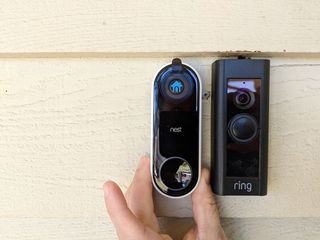
Since Nest Doorbell (wired) debuted many years ago — and saw the subsequent name change to Nest Doorbell (wired) — several viable competitors have taken up the mantle as the best doorbell to buy in certain situations. Ring Video Doorbell Pro 2 remains Ring's top-tier alternative to the Nest Doorbell (wired). While it lacks some of the most advanced notification features of the Nest Doorbell (wired), Ring Video Doorbell Pro 2 has a Radar-powered "3D motion detection" that can be a more granular way of detecting motion from 5-30ft away. Ring products are always best when paired together since they don't work well with Google Assistant.
Arlo Video Doorbell is an almost feature-for-feature replacement for Nest Doorbell (wired) and even offers local storage options if you have an Arlo hub. This one is an excellent, more affordable alternative and only lacks the Familiar Faces feature from Nest Doorbell (wired). Otherwise, you can expect similarly intelligent notifications, people, animal, package, and vehicle AI-powered motion detection, and a $3 per month subscription that's basically required to get any of the best features — just like Nest.
Eufy Video Doorbell also requires a wire but, even at the bargain $160 price tag, doesn't require a subscription for any of its features. While it only can recognize people — meaning false notifications from things blowing in the wind is always a possibility — Eufy prides itself on local on-board processing and local storage. In short, you pay for this thing once and never have to spend another dime.
Nest Doorbell (wired): Should you buy it?
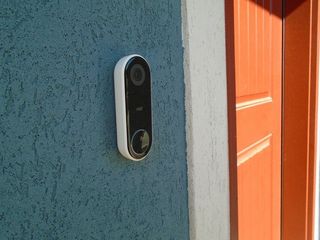
You should buy this if...
- You want the most intelligent alerts of any video doorbell
- The Familiar Faces feature would be useful for you
- You want a video doorbell that can record continuously
You shouldn't buy this if...
- You don't want another monthly subscription
- You want a video doorbell that supports local storage
- You don't want to wire it up (or you need a doorbell with battery backup)
There are quite a few video doorbells out there at this point. I've used everything from Ring. Nest Doorbell (wired) is better. It's better because the picture itself is better. It's better because the notifications are smarter.
Nest has made a better smarter doorbell.
That's not to say it's without faults. Nest's apps could use better options for granting permissions to family members. The Nest Secure security system has secondary account access for family members — the doorbell would be good to take advantage of this, too. As it stands, I've had to give my kids full access to our Nest account. I'd prefer something I have more control over.
4.5 out of 5
On its own, Nest Doorbell (wired) easily is the best doorbell I've used. I wouldn't rip out an existing Ring Pro for it, but it is the one I'll be recommending from here on out — especially if you're already an owner of other Nest products.

Nest Doorbell (wired)
Bottom line: Wiring up a doorbell isn't particularly difficult, but it's totally worth it when Nest Doorbell (wired) is the one you chose. Intelligent alerts, amazing Google Home integration, and a sleek design make this one of the best video doorbells you can buy.
Review Changelog
This article was originally published in March 2018. It was updated in October 2021 with the following changes:
- Reformatted to match newer reviews.
- Added price and availability section and linked to newer Nest doorbell products.
- Added competition section.

